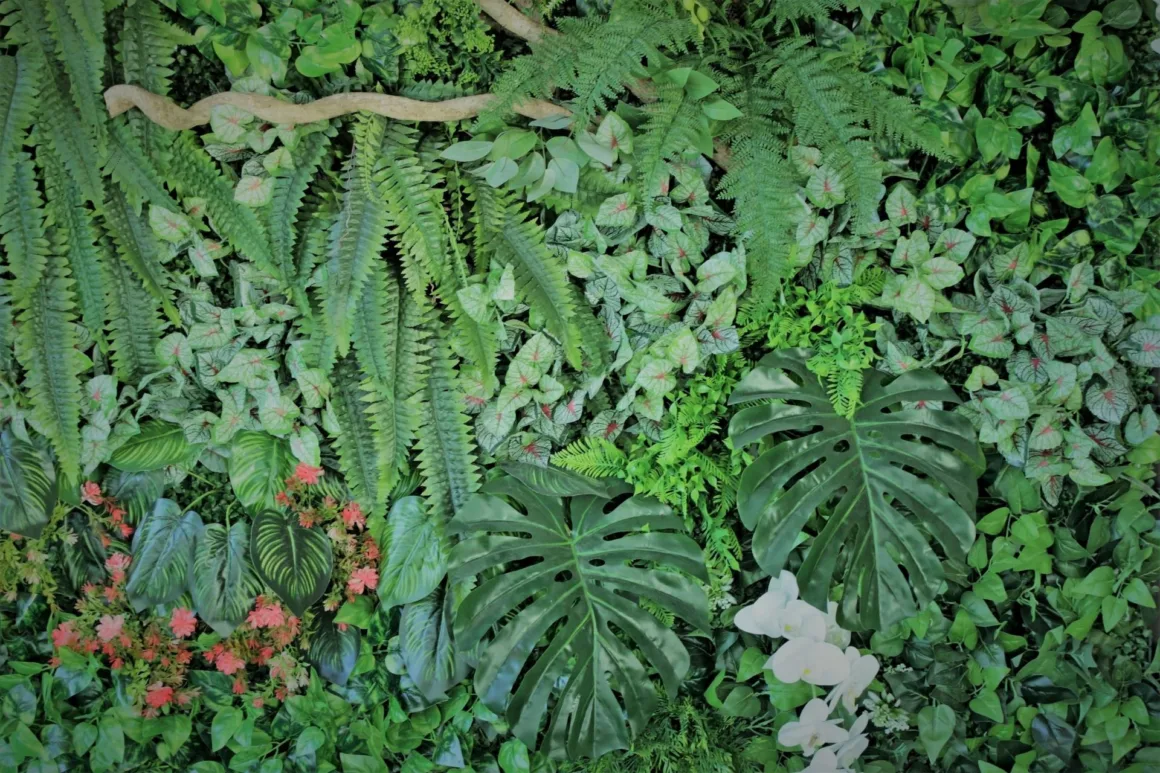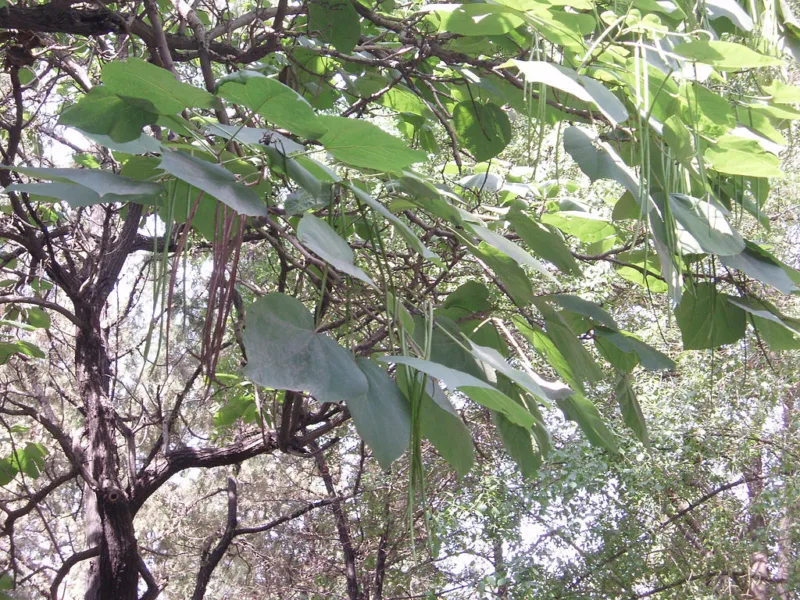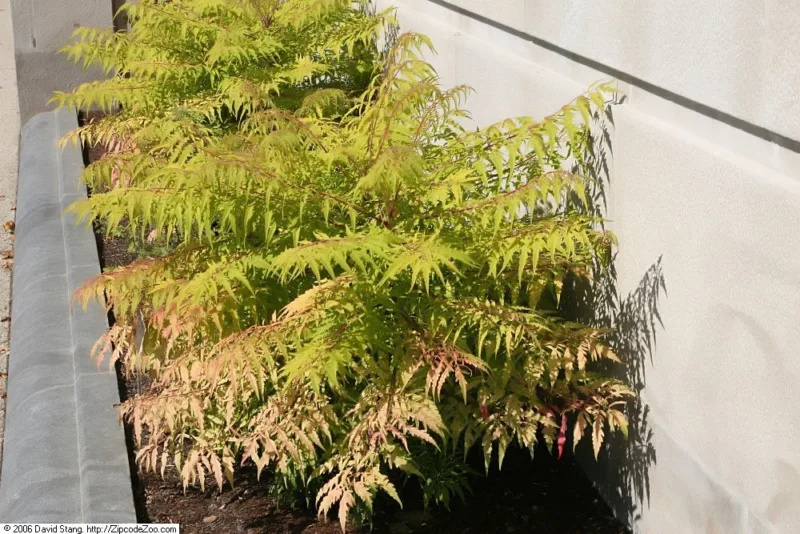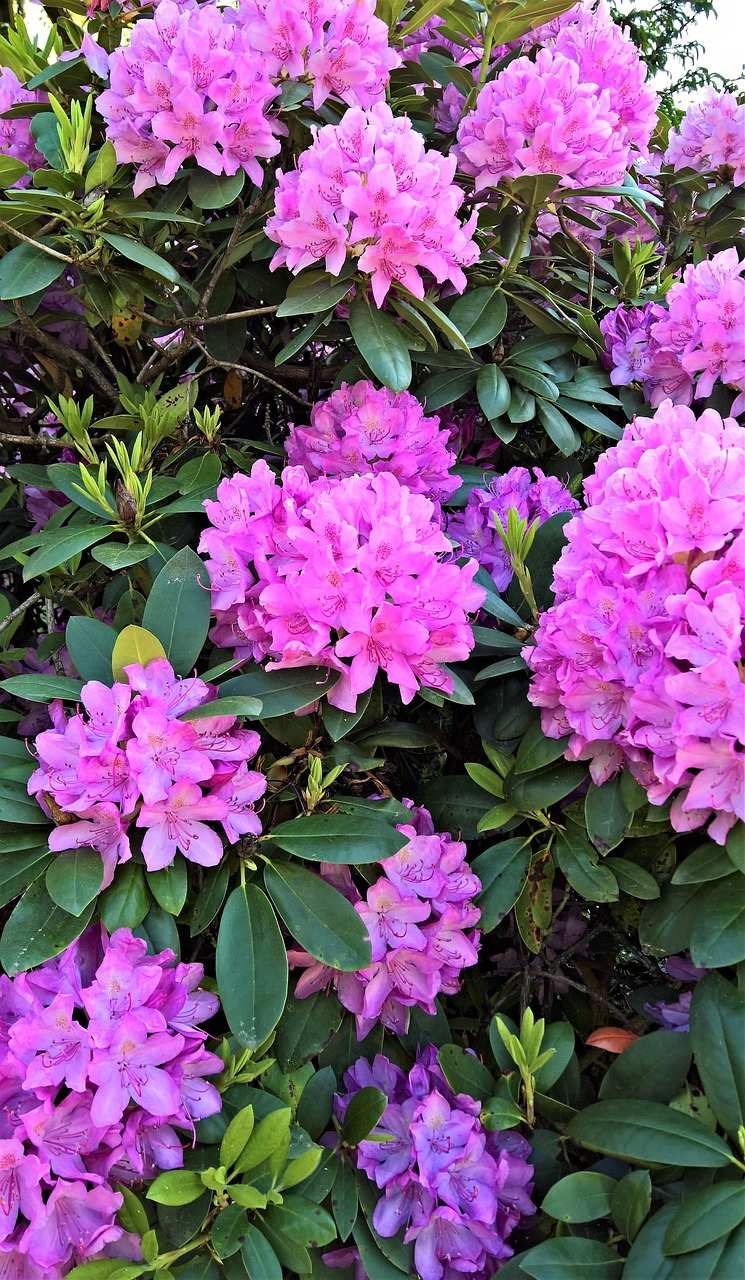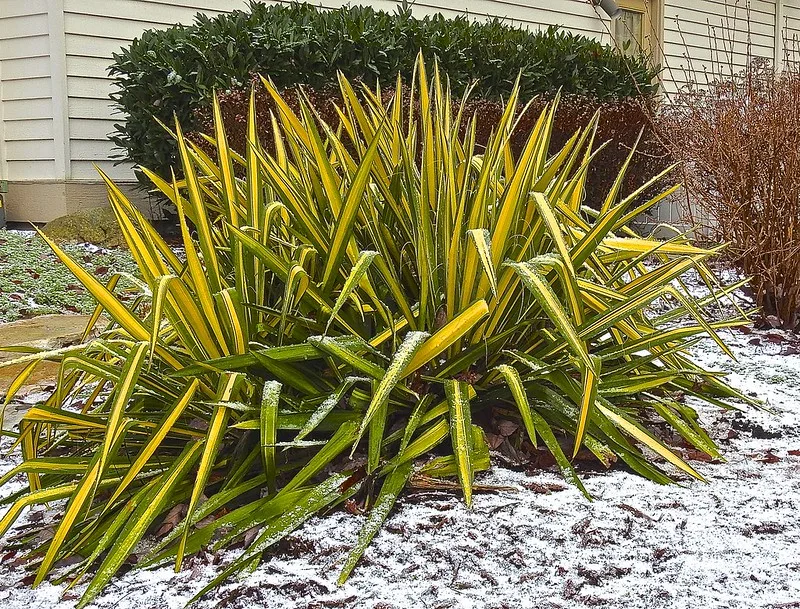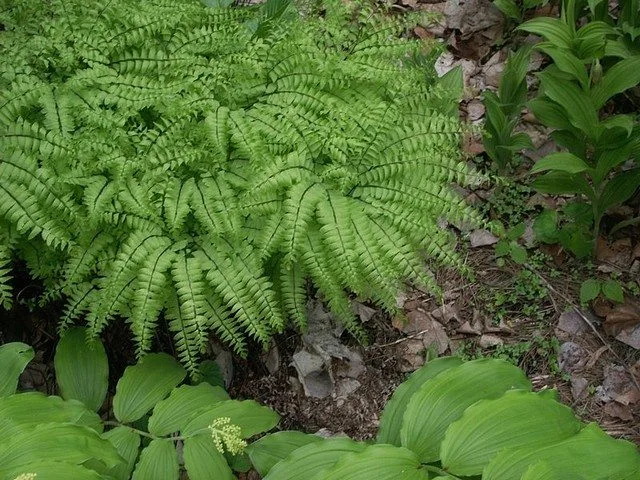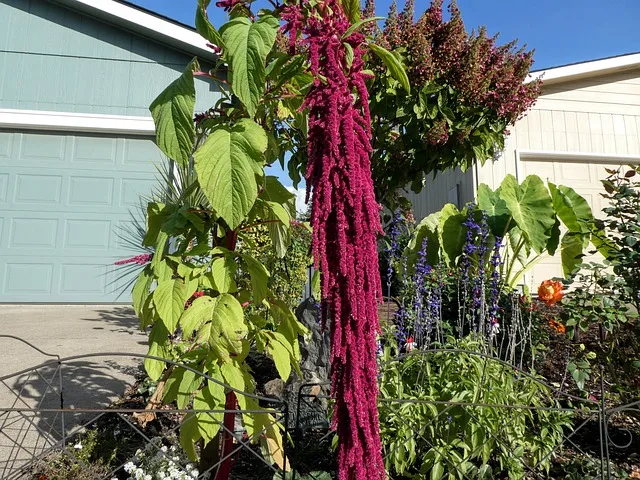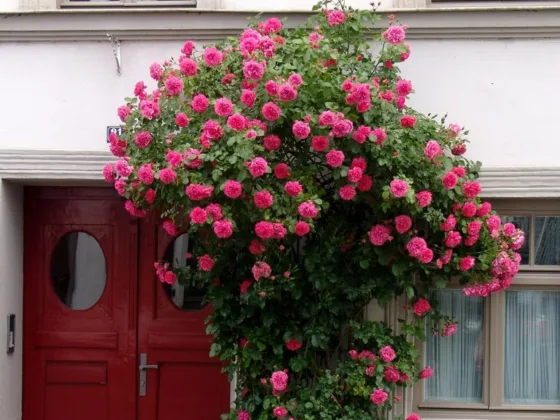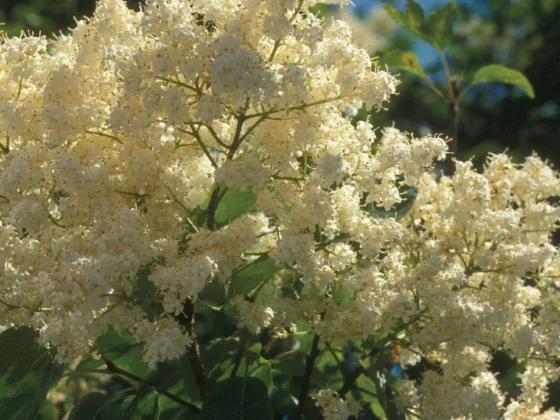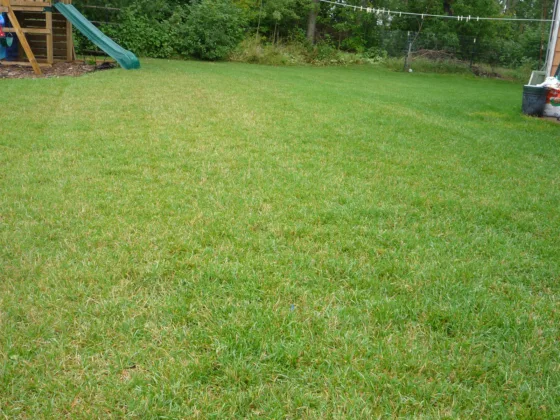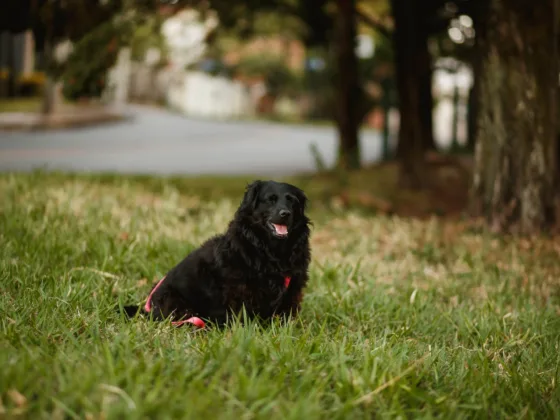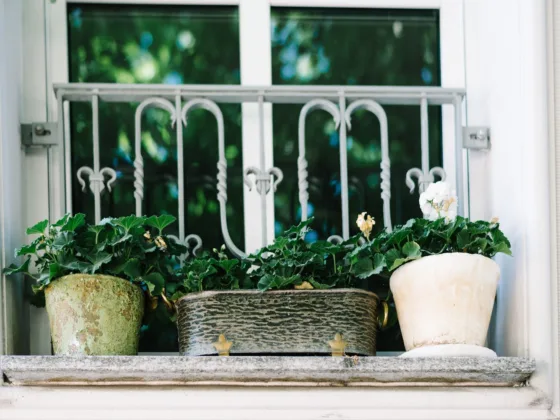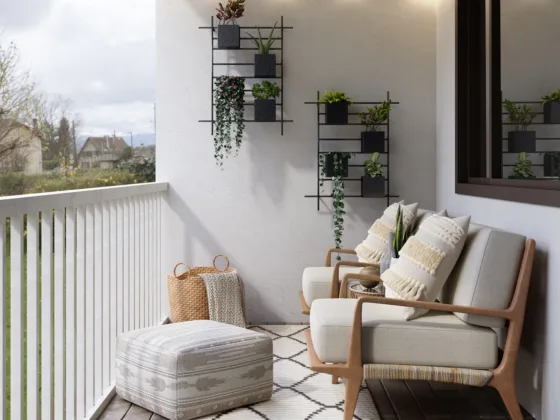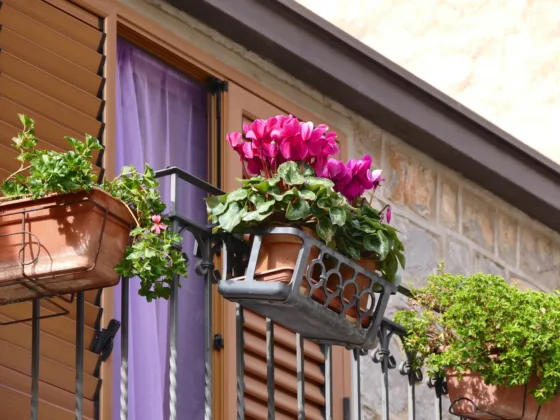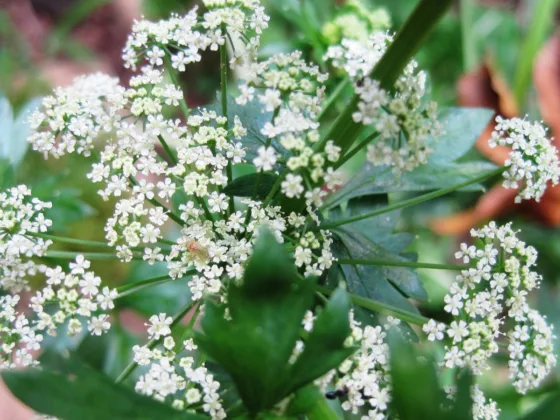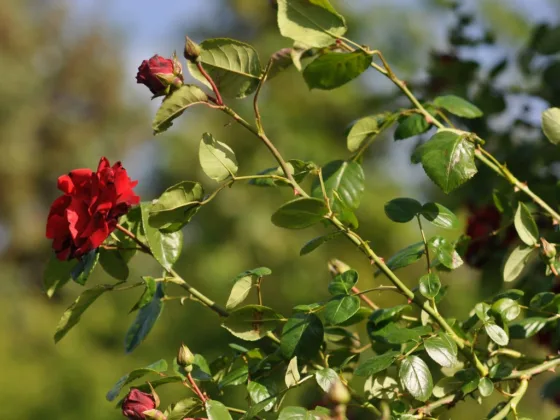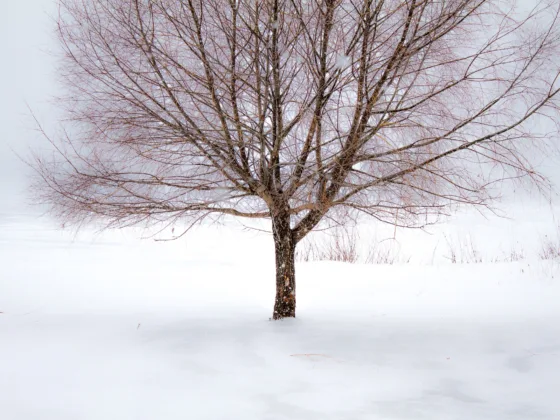Table of Contents Show
We’ve all fantasized about it at some time; a tropical vacation away on some remote island, lazing on a white sandy beach overlooking a tranquil azure blue ocean, and lush palms, coconuts, hibiscus, and other tropical vegetation gently swaying in the warm sea breeze.
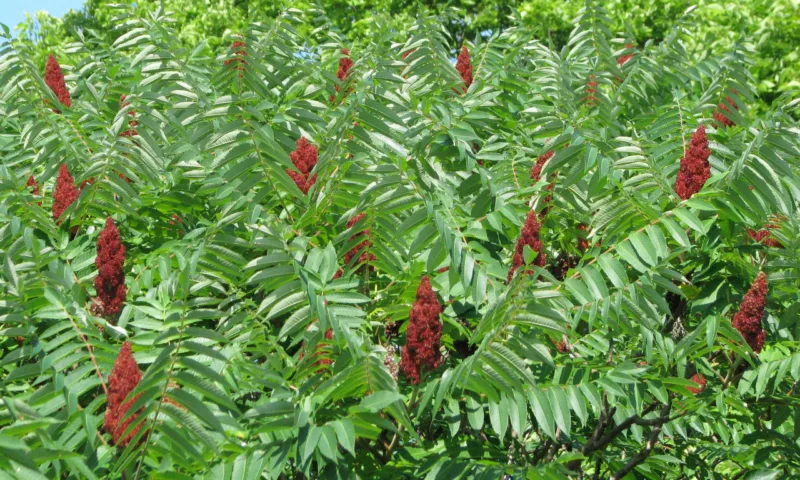
For some of us, it’s a memory of a retreat to a favorite tropical hideaway of years gone by. For others, it’s just a dream, but still no less vivid in the depths of a cold northern winter.
We long to have some memento of those tropical dreams in our own yards, a tip of our hats to those memories of that warm winter paradise that sustained us through another bitter winter.
Clearly, an all-encompassing tropical landscape style would be somewhat out of place in a northern yard; it’s so foreign to our parts that it would stand out like a sore thumb among the evergreens, ash, and oak trees.
But it is entirely possible to introduce a hint of the tropics into our northern yards and gardens in a subtle and unobtrusive way. In fact, when done properly, it can enrich our landscapes by broadening the range of forms, textures, and colors present. And there are a number of very hardy “tropical-looking” plants at our disposal with which to accomplish this.
So what is it about a plant that makes it “tropical” in appearance? “Tropical” is a climatic term, so by its very definition, a truly tropical plant won’t survive our northern winters.
There’s actually no strict definition of what makes a plant “tropical-looking”; something looks “tropical” because we associate it with our own impressions and visions of a tropical paradise. So, we’ll have to dig deep into our imaginations for the answers.
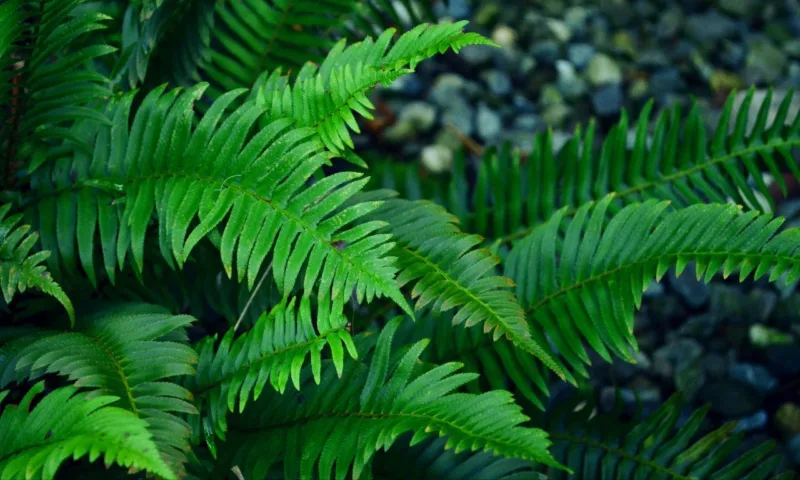
What is it about plants that remind us of the tropics? We associate the tropics with coconut and sago palms, showy hibiscus flowers, dense ferns, and delectable fruits.
From a design perspective, the “tropical look” can be distilled down to a few fundamental attributes, with the form being the most important. We immediately identify the distinctive silhouette of a tall coconut tree, the frond-like compound foliage of palms, abundant fruits hanging from wide-leaved banana trees, and the sharp spikes of a pineapple.
Another key attribute is texture; we tend to associate overly coarse and overly fine foliage textures with exotic tropical plants. Other attributes include sweet fragrances and bright colors, which help to set the tropical ambiance in our minds.
The trick to using “tropical” plants in the northern landscape is to use them in a way that doesn’t confuse the style. People instinctively know that spruce trees don’t tower above the beaches of Barbados, and palm trees don’t line the streets of Saskatoon.
The key is to then interject tropical elements into the landscape in a subtle way, one that “gives a nod” to the tropics without overtly looking tropical. This is actually easy to accomplish and requires the designer to use restraint and balance.
So without delay, let me present to you five spectacular “tropical-looking” plants that you might consider bringing into your landscape to subtly remind you of your tropical paradise, real or imagined!
Tropical-Looking Tree – Chinese Catalpa (Catalpa ovata), Zone 3
Because of their physical stature and dominance, trees effectively set the tone for the overall landscape style. And we all know that there aren’t too many tropical trees growing in the North. Having said this, the Chinese catalpa is an exception.
Its very coarse and spreading foliage, fragrant butter-yellow orchid-like flowers, and enormous pencil-shaped hanging fruit all scream out “tropical” to almost anyone who sees it. In my estimation, this is the most tropical-looking tree we have at our disposal.
As trees are so dominant in a landscape scene, you’ll want to use no more than one of these trees in a smaller yard, or possibly a couple in the largest of yards. Any more, and you’ll skew the entire landscape scene in a confusing direction, not quite northern, not quite tropical.
Place it in an open unencumbered location as a solitary accent, where its coarse effects can be appreciated from a distance. I would keep it away from sharply articulated evergreens such as spruce trees, which would hamper its impact by suggesting a totally different style. Instead, surround it with “nondescript” deciduous trees like ash and maple, against which it can stand out in contrast.
Unfortunately, there aren’t a lot of “tropical” tree options for Zone 2. For those living in zones 4 and warmer, the northern catalpa (Catalpa speciosa) is an interesting alternative with showier purple orchid-like flowers. However, I would still prefer the Chinese catalpa because its fruit is longer and narrower, further enhancing the tropical illusion.
Large Tropical-Looking Shrub – Tiger Eyes Sumac (Rhus typhina ‘Tiger Eyes’), Zone 3
Of all the plants we have in our palette, the sumacs are the most often referred to as “tropical” in appearance by gardeners and garden writers. Their enormous frond-like compound leaves evoke images of sago palms and lush tropical forests.
They provide a textural contrast with the finely textured leaves held on coarse, clubby branches, and their candelabra-like flowers and fruit are as distinctive as it gets.
While most Sumacs will add a hint of the tropics to a landscape, I just couldn’t resist recommending Tiger Eyes, a newer introduction that takes Sumacs to a whole new level. It has finely dissected foliage in shades of gold and pink, and the fall colors are unique and awesome.
Best of all, it suckers less than the average sumac! Put this one in a garden setting in full sun where it will really stand out. Combine it with coarsely-textured plants such as rhubarb and angel’s trumpet for maximum textural effect, and with dark green or purple plants for extreme color contrast.
For those living in colder zones, the common smooth sumacs (Rhus glabra) are a totally acceptable alternative. Their fall color is a hot, bright red, and there are hardy-cut leaf varieties available. However, beware of their suckering nature; I’d hesitate to plant the species in a garden setting, or before long, you’ll have an entire colony of sumacs!
Small Tropical-Looking Shrub – Roseum Elegans Rhododendron (Rhododendron ‘Roseum Elegans’), Zone 4
For those of us in the North who are blessed with the necessary combination of comparatively warmer winters, ample moisture, and acidic soils, nothing can inject the color and fragrance of the tropics into a landscape like the beautiful rhododendron.
And of all the hardy rhodos, the most “tropical” in appearance is the Catawba rhododendron and its fine cultivars. These have magnificent large flowers in spring that remind of the tropical Rhodos and Hibiscus, and the broad evergreen leaves are like scale versions of the banana leaves of the tropics.
The temptation with rhodos is to use them in mass and in places of prominence in the garden, which is fine and good for a garden setting.
However, I have found in my travels that the most “tropical” of Rhodos are best used in a partially shady, secluded site underneath a canopy of deciduous trees, or mixed with plainer plants along a woodland border, or the suburban landscape equivalent. I find it looks more tropical when it is “accidental” as opposed to showcase, but that’s just me!
Rhododendrons are fussy to grow, so you are best to consider their specific growing requirements (we have a special article in the Info Zone on this very topic). Much as I’d love to tell those living in zones 2 and 3 about all the hardier rhodos they can use, there are precious few if any that are hardier than zone 4.
Those living in Zone 3, or those in Zone 2 who are prepared to provide supplemental winter protection, can try hardier cultivars like Orchid Lights azalea (Rhododendron ‘Orchid Lights’) or P.J.M rhododendron (Rhododendron ‘P.J.M.’).
Tropical-Looking Perennial – Golden Sword Yucca (Yucca filamentous ‘Golden Sword’), Zone 4
There are a number of perennials that have “tropical-looking” attributes, but here’s one that’s really different. Yucca is most often considered a southwestern or desert plant, more like a spiky cactus than anything else.
After all, it is native to these regions of the United States. But when used creatively, it reminds one of the pineapples and the popular annual tropical Dracaena, the spike we find in so many summer container plantings.
Golden Sword is all that and more! Besides the sharp spikes of succulent foliage radiating from its central stem which could easily be mistaken for a pineapple bush, this plant has bold, bright streaks of creamy gold variegation along these leaves. From a design perspective, this plant has it all – bold texture, unmistakable form, and brilliant color.
I would use it as a solitary accent in a lush garden, or solo in a container, but with extreme restraint – too many of these, and you’ll send your garden guests into seizures! When placing it, ask yourself where you might plant a pineapple in your garden in you could…
There is a species of yucca (Yucca glauca) that is hardy to zone 3 with adequate snow cover; this would be the most acceptable alternative, although it doesn’t have the bold colors.
The succulent leaves of all yuccas are evergreen, so anyone trying these in colder regions needs to take efforts to protect them over winter, or else have a brown mess to clean up in spring.
Tropical-Looking Fern – Maidenhair Fern (Adiantum pedatum), Zone 2
One of the simplest tropical elements we can bring to our landscapes is the effect of a few ferns. These delicate and finely-textured plants of the forest floor actually enjoy a worldwide distribution, even here in the North, yet still, they evoke thoughts of a tropical paradise.
Don’t ask questions; just take advantage of this fact and bring their finely textured fronds into the landscape for a hint of the tropics.
Maidenhair fern has distinctive foliage that’s easier to see than to describe. While nowhere near a native of the tropics, this plant’s combination of unique foliage form, arching fronds, and finely crinkled texture can easily be used to suggest a tropical flair in a northern landscape.
There are two ways to effectively utilize them in a tropical sense; as the dominant groundcover for a shady area of the garden, especially underneath mature trees, and in a shady part of the garden as a foil to plants with coarser textures. Heck, why not surround the base of your Chinese catalpa with an undergrowth of ferns?
Frankly, there are many ferns that are hardy in the North, and pretty well all of them can be used to bring a hint of the tropics into your yard. Lady fern (Ahtyrium felix-femina) is exceptionally fine-textured, and ostrich fern (Matteuccia strutheriopteris) will naturalize an entire area quite quickly.
Bonus Tropical-Looking Plant – Amaranthus ‘Love Lies Bleeding’, annual
OK, so I promised five plants, but let me throw in a bonus plant just to close this article out. This one is an annual, so it technically doesn’t count in our discussion.
But the tactful use of annuals can further set the tone of the landscape and complete the tropical illusion. And when it comes to annuals, there is no shortage of tropical-looking plants, because so many of them actually are from the tropics!
In keeping with the theme of creating a tropical illusion through the use of design attributes, I have to mention one plant that will immediately lend a tropical feel to the landscape, without actually screaming out for attention.
Love Lies Bleeding has long drooping chains of fuchsia-red flowers which dangle from horizontal stems. The combination of color, texture, and form presented by this plant speaks to the tropics and will complement the other tricks you’ve employed in your garden.
The key to using this plant effectively is to have it complement the other illusions you have created, rather than standing alone in isolation. Use it in a sunny location in the garden in groups of 5 or more, near the front of the border.
By planting it next to the ferns, as a backdrop for the yucca, or at the base of the sumac, you’ll tie the effects together and “complete the nod”, so to speak.
So remember, any of these plants in isolation will give a suggestion of the tropics without actually interjecting a conflicting landscape style into your northern yard. When used in combination and in moderation across the landscape, they will create a tropical illusion, but make sure that they don’t start to dictate the style.
